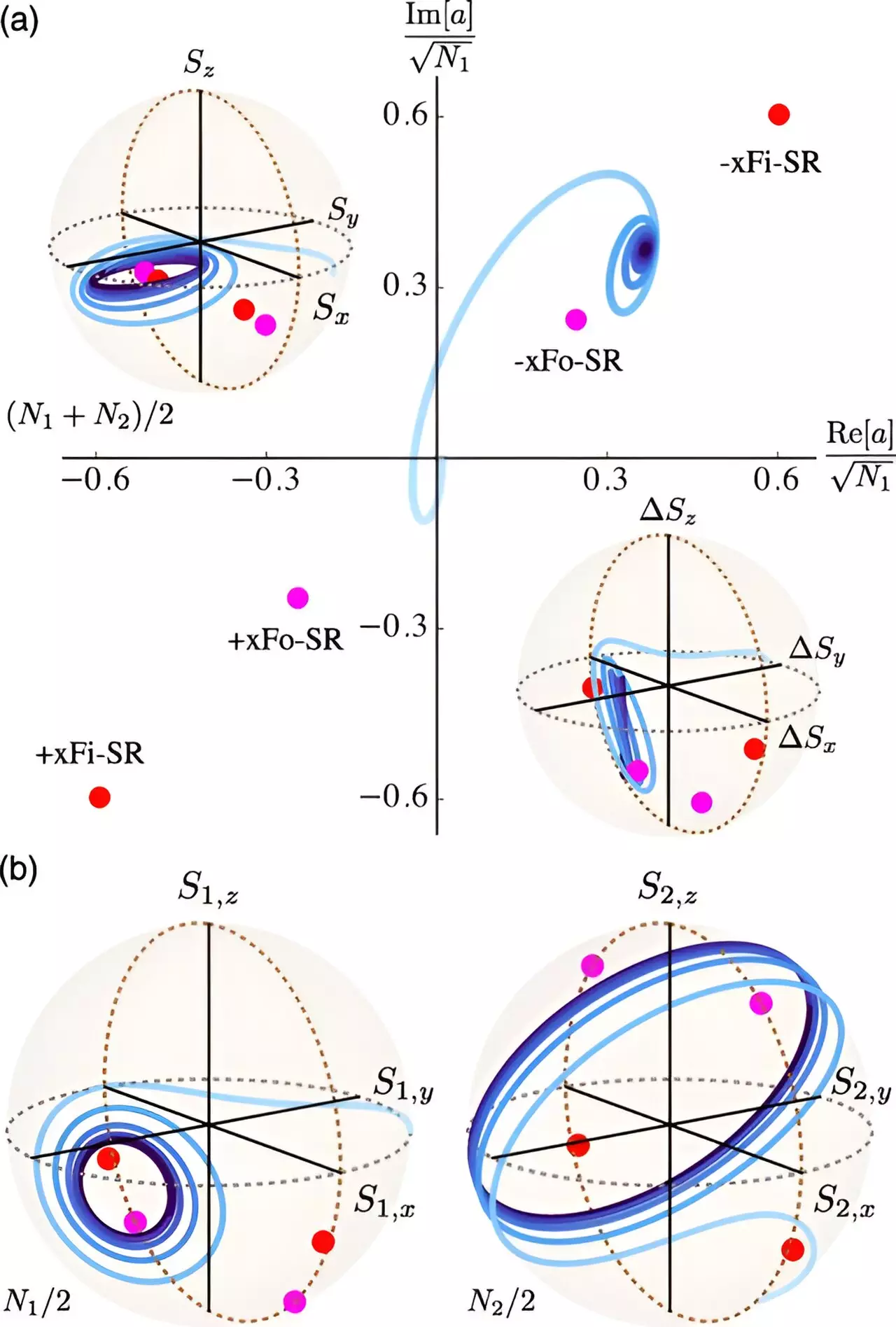The concept of superradiance in quantum optics is a fascinating and surprising phenomenon that has been studied by theoretical physicist Farokh Mivehvar. He has investigated the interaction of two collections of atoms emitting light inside a quantum cavity. This cavity is an optical device consisting of two high-quality, tiny mirrors facing each other that confine the light within a small area for an extended period of time.
In quantum optics, superradiance can be intuitively understood by imagining an atom as a tiny antenna that can emit light under certain conditions. When a collection of atoms is located far apart and thermally excited, they radiate independently from each other, and the intensity of the emitted light is proportional to the number of atoms present. However, when these atoms are located very closely together, they start to synchronize with each other and emit light whose intensity is proportional to the square of the number of atoms.
Farokh Mivehvar’s recent work, published in Physical Review Letters, focuses on the theoretical consideration of two collections of atoms (N1 and N2) inside a quantum cavity, where each ensemble of atoms is located closely together and can emit light superradiantly. The challenge lies in understanding how these two giant antennae associated with the two atomic ensembles can emit light simultaneously.
Read More: The Future of Solar Energy: Innovative Technologies in Concentrator Photovoltaics
Mivehvar’s research reveals two distinct ways in which the two giant antennae can emit light. In one scenario, the two giant antennae cooperate and form a single super-giant antenna, leading to even more efficient superradiant light emission. In contrast, in the second scenario, the two giant antennae compete destructively, resulting in the suppression of superradiant light emission. Interestingly, when the two ensembles have an equal number of atoms, the superradiant light emission is completely suppressed.
The model and predictions proposed by Farokh Mivehvar can be implemented and observed in state-of-the-art cavity/waveguide-quantum-electrodynamics experiments. These findings have significant implications for the field of quantum optics and may pave the way for advancements in the new generation of superradiant lasers.
The study of superradiance in quantum optics offers valuable insights into the behavior of atoms emitting light in a confined space. Through meticulous theoretical investigations and innovative experiments, researchers like Farokh Mivehvar continue to unravel the mysteries of quantum phenomena, opening new doors for future discoveries and applications in the realm of optical science.


Leave a Reply